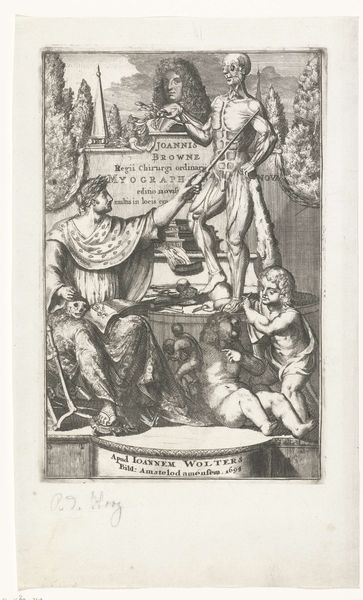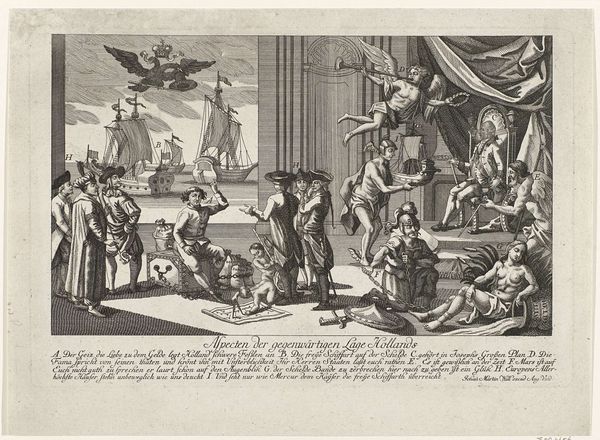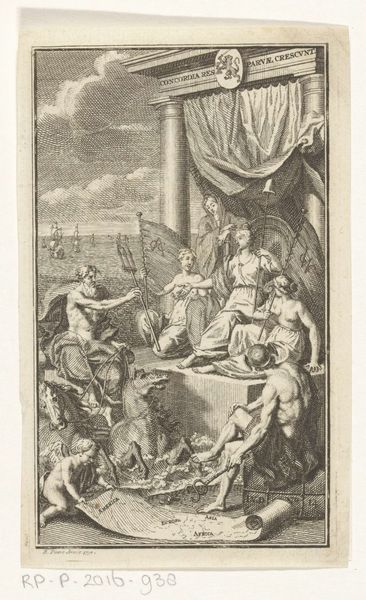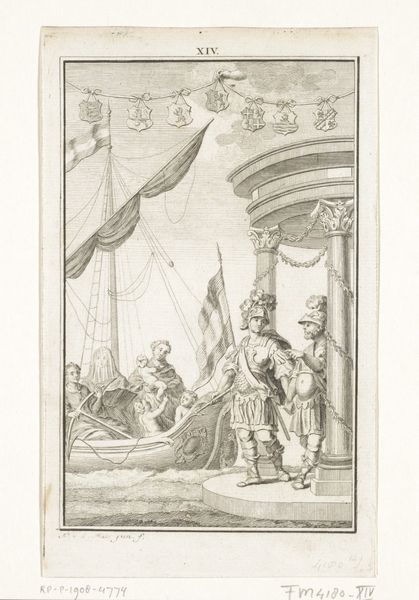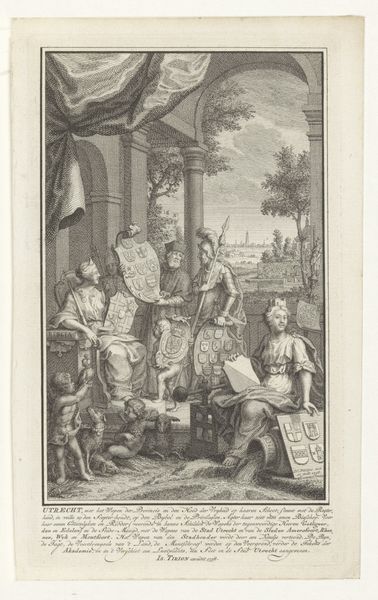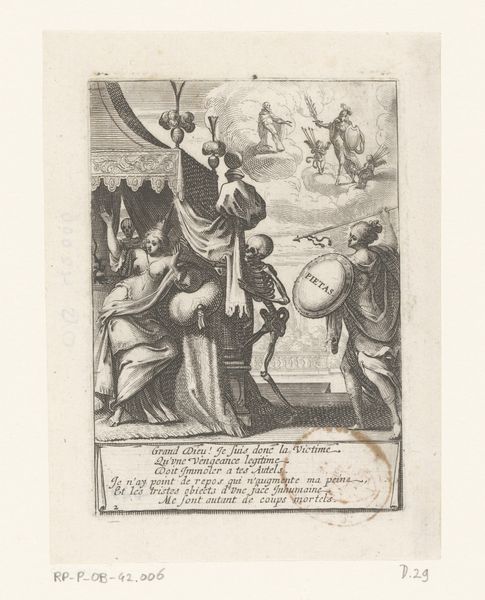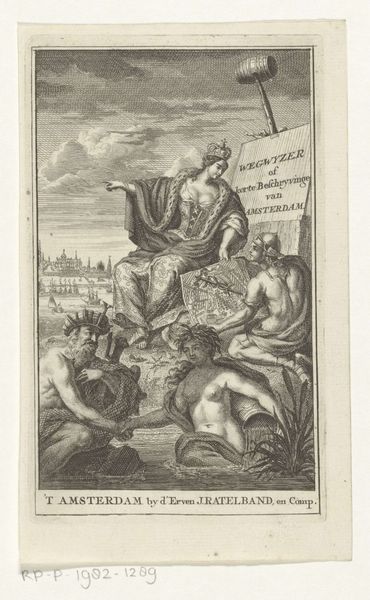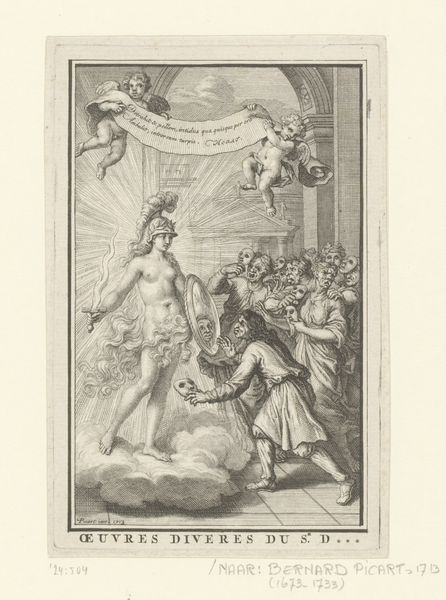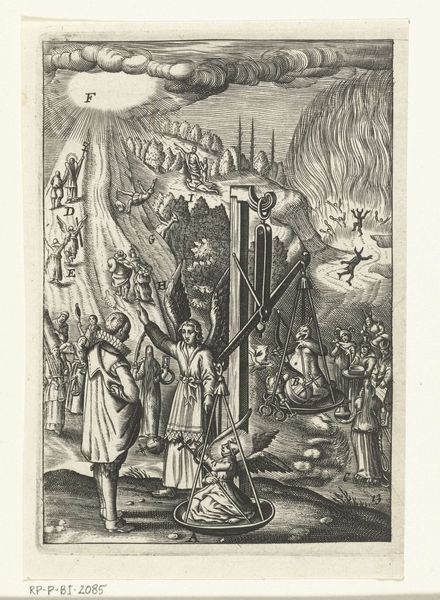
Allegorie op de bankroeten te Amsterdam door de wissel-windhandel 1763
0:00
0:00
jancasparphilips
Rijksmuseum
Dimensions: height 182 mm, width 109 mm
Copyright: Rijks Museum: Open Domain
Curator: Jan Caspar Philips created this print, titled "Allegory of the Bankruptcies in Amsterdam due to Speculative Trading," in 1763. It resides in the Rijksmuseum. What stands out to you initially? Editor: It's chaos, but a very organized kind of chaos! My eye darts around, pulled in by the dramatic poses, the sheer busyness of the composition. The light and dark contrast gives it a theatrical feel. Curator: Indeed. Philips, working with engraving techniques, depicts this economic crisis using allegory, making the abstract visible through human and symbolic figures. Notice the monkey at the bottom writing, and how the collapsing figure in the center shields the Amsterdam coat-of-arms on a shield. What meanings do you glean? Editor: The monkey likely represents foolish behavior, a common trope about mimicking and greed in art, suggesting imprudent business practices led to these bankruptcies. And that collapsing figure seems to embody Amsterdam itself, threatened by financial ruin. There is the cornucopia on the right too – is that riches spilling forth or being scattered? Curator: I'd argue being scattered, signifying loss. And consider the social context. Amsterdam was a major hub of trade, ripe for speculative ventures and also vulnerable to booms and busts. These bankruptcies impacted lives and changed power dynamics. Philips, as a craftsman producing these images, participated directly in documenting and disseminating these messages. It speaks to the power of print in shaping public opinion. What symbols tell this? Editor: The cityscapes in the background seem stable, but above them winged allegorical figures clash. There are medallions with what looks like Icarus falling. So is this perhaps commentary on the overreach and the ambition ending in disaster? The artist clearly layered many cultural and symbolic levels to this. Curator: Precisely, inviting deeper contemplation. These emblems and figures aren't simply decoration. They're loaded with historical, moral weight and the human desire to both achieve great wealth but not suffer the fall of doing so. Editor: Looking closely at this again it becomes even clearer. It is a clever fusion of history, psychology, and visual messaging about ambition. It’s all connected here to convey that moral lesson for the viewers. Curator: The choice of printed medium speaks to wide distribution, making this more of a call to understand the economic and social fabric that supported (or did not) the era’s ambition. It definitely provides an accessible means of conveying complex economic realities, influencing and challenging consumption and its effect.
Comments
No comments
Be the first to comment and join the conversation on the ultimate creative platform.


